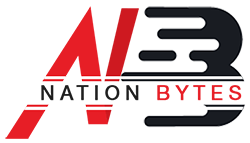PTA Blocks Indian YouTube Channels and Websites in Pakistan
In a decisive move to safeguard national security and counter misinformation, the Pakistan Telecommunication Authority (PTA) has blocked 16 Indian YouTube news channels, 31 specific video links, and 32 websites for disseminating content deemed as anti-Pakistan propaganda.

The Pakistan Telecommunication Authority (PTA) has blocked 16 Indian YouTube news channels, 31 videos, and 32 websites for spreading what officials called anti-Pakistan propaganda and false information.
According to PTA, this action was taken to protect national security, maintain public order, and prevent the spread of misinformation online.
Why the Channels Were Blocked
In its official statement, PTA said:
“The blocked content was found to be spreading misleading and harmful narratives aimed at manipulating public opinion and undermining national unity.”
The content on these platforms reportedly:
-
Spread false news about Pakistan’s internal matters
-
Created hatred and division among citizens
-
Targeted national institutions and tried to damage public trust
PTA officials said such content could harm national unity and social stability, which is why it was necessary to take action.
What Was Blocked
PTA confirmed that it had blocked:
-
16 Indian YouTube news channels
-
31 specific YouTube video links
-
32 websites
The authority said this decision came after a detailed review and monitoring process that found violations of Pakistan’s digital content laws.
Growing Tensions Between Pakistan and India
The move comes during a period of rising tension between the two countries. Recent developments include:
-
Cross-border incidents along the Line of Control (LoC)
-
Accusations of cyberattacks and online propaganda
-
Information campaigns targeting both nations
With such events increasing, Pakistan believes it must carefully control the spread of misinformation to avoid further conflict and protect national interests.
What This Decision Means
The blocking of these platforms could lead to:
-
A decrease in the spread of false information about Pakistan
-
Stronger oversight of foreign websites operating in Pakistan
-
More focus on promoting local digital content that supports national interests
Experts say this also shows Pakistan’s zero-tolerance policy for digital platforms that harm its sovereignty or stability.
Expert Opinions
Dr. Ayesha Khan, a cybersecurity expert, said:
“In today’s world, information is a weapon. Securing digital borders is as important as securing physical ones.”
Imran Malik, a media professor, added:
“Freedom of expression matters, but it cannot come at the cost of national security. There must be limits to harmful or false content.”
Legal Authority Behind the Action
The PTA has the legal power to block or remove content under:
-
The Pakistan Electronic Crimes Act (PECA) 2016, which allows the authority to restrict access to material that threatens national security or public order.
-
Recent amendments that give PTA stronger control over online platforms and harmful digital content.
In the past, PTA has also taken similar actions, such as:
-
Blocking TikTok in 2020 for immoral or inappropriate content
-
Temporarily suspending Twitter and Facebook during unrest
These moves show the regulator’s active role in controlling online content when it feels necessary.
International Reactions
The global response has been mixed.
-
India criticized the move, calling it censorship and an attack on freedom of expression.
-
Human rights groups urged Pakistan to ensure that regulation doesn’t silence legitimate opinions.
-
Digital rights organizations called for more transparency in how such decisions are made.
Final Thoughts
The PTA’s move to block Indian channels and websites highlights Pakistan’s growing focus on digital security and sovereignty.
While the step has raised debates over censorship and free speech, many agree that balancing freedom and national safety is one of the toughest challenges in today’s digital world.
For more updates, visit Nation bytes

 Ateeq Ur Rehman
Ateeq Ur Rehman